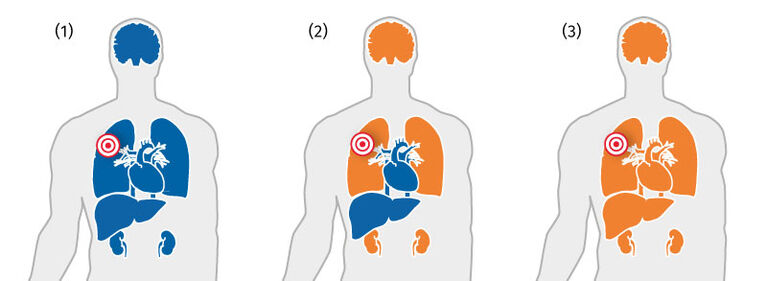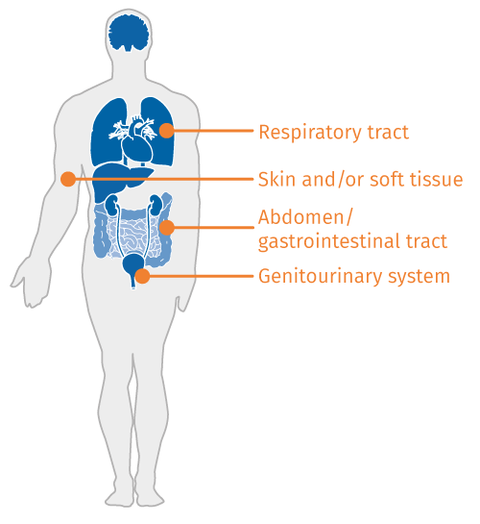The dynamic stages of sepsis
- A local infection cannot be limited by the body’s defense mechanisms; pathogens and the toxins they produce can trigger a general inflammatory response. The blood vessels around the infection focus expand and become more permeable. The release of messenger substances allows white blood cells to penetrate the vascular walls into the tissues to fight the pathogens. The blood in the micro-vessels surrounding the infection coagulates as a defense mechanism.
- While the inflammatory response is targeted to destroy pathogens or clear toxins, it also inflicts collateral damage: circulating mediators affect the function of individual organs, which start to deteriorate and then completely fail.
- Several organs stop functioning, either sequentially or simultaneously. In severe cases, blood pressure drops dramatically, the heart races, the oxygen supply via the lungs, and consequently of the organs and tissues, deteriorates, and the patient’s mental status is gravely impaired. The patient suffers a septic shock, putting his life in acute danger.





